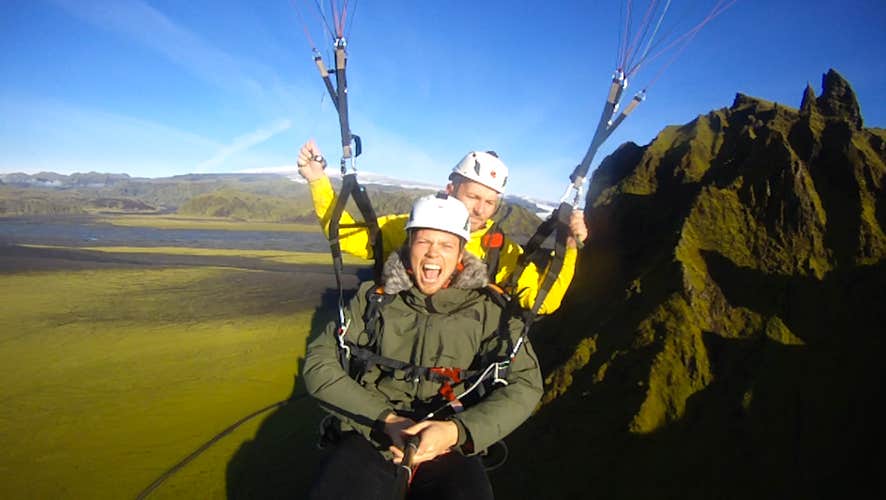説明
まとめ
説明
爽快なパラグライダー・ツアーに参加して、ワンランク上のアイスランド南海岸観光を楽しみませんか?パラグライダーのインストラクターと一緒に大空を飛び、鳥のようにレイニスフィヤラ黒砂海岸や滝、ヴィーク村を眺められる1時間のドキドキワクワクの体験です。
南海岸のヴィーク村(Vik)でパラグライダーのインストラクターと合流してください。ヴィークはアイスランドの環状道路(リングロード)沿いにあり、レイキャビクから容易にアクセスできます。
集合場所から、パラグライダーのインストラクターが運転するスーパージープ、またはマウンテンバスに乗って近くの離陸地点まで移動します。到着後、安全に関するブリーフィングを受け、タンデムパラグライダーの基本を学びます。ご質問があれば何でも聞いてください。
崖から飛び降りるようなことはありませんのでご安心を!すべての手順を確実にこなし、体験中の安全をしっかり確保してくれる経験豊富なタンデムパイロットと一緒に飛びます。
予備知識は不要で、お子様も12歳からご参加いただけます。安全のため、パラグライダー用ハーネス、安全装備、ヘルメットも貸し出します。
パラグライダーを膨らませ、安全確認が終わったら、スロープを数歩下りて大空へ。フライトコースはその日の天候や眺望に合わせて決定しますので、一回一回がそれぞれ違う特別な空の旅です。
風光明媚なヴィーク村と壮大なレイニスフィヤラ黒砂海岸の上空を滑空します。レイニスフィヤラはこの国で最も人気のある黒砂海岸で、上から眺めると一層息をのむような美しさです。
この火山性の砂浜を見やれば、激しく打ち寄せる北大西洋の波をものともせず、堂々と聳えるレイニスドランガル玄武岩のパノラマビューも楽しめるでしょう。
空からは遠く内陸部まで見渡すこともできます。緑色の苔の絨毯が広がり、溶岩が飾り鋲のようです。夏の盛りには紫色のルピナスや野草が一面に咲き乱れます。崖に営巣するパフィンやカモメも、パラグライダーに挨拶をしてくれるはずです。
このタンデムフライトでは他にもスコゥガフォスの滝、セリャランズフォスの滝、緑豊かな渓谷、遠くの氷河など、壮大な景色を見ることができます。
パイロットが大興奮のフライトをHDビデオに録画します。ご予約の際にSDカードパッケージをご購入いただいた方は、旅の記念の動画に動画をお持ち帰りください。
ヴィークに戻ってアドベンチャー体験は終了となります。各自アイスランドの旅を自由に続けてください。
タンデム・パラグライダー・ツアーで、アイスランド南海岸を全く違った形で体験するチャンスをお見逃しなく!日付を選択すると空き状況を確認できます。













